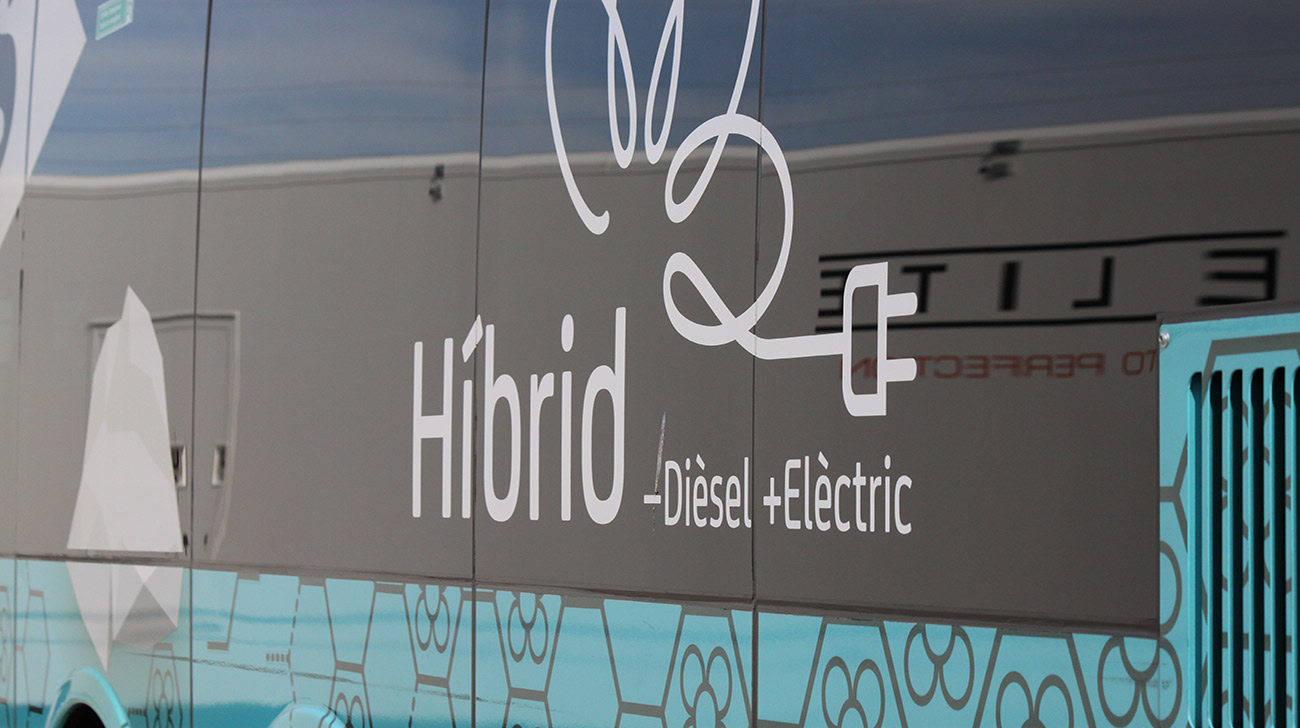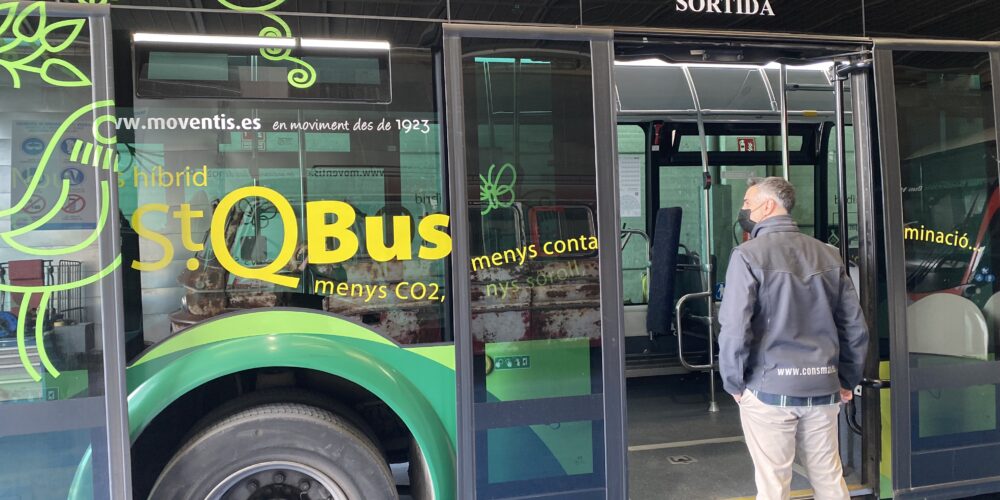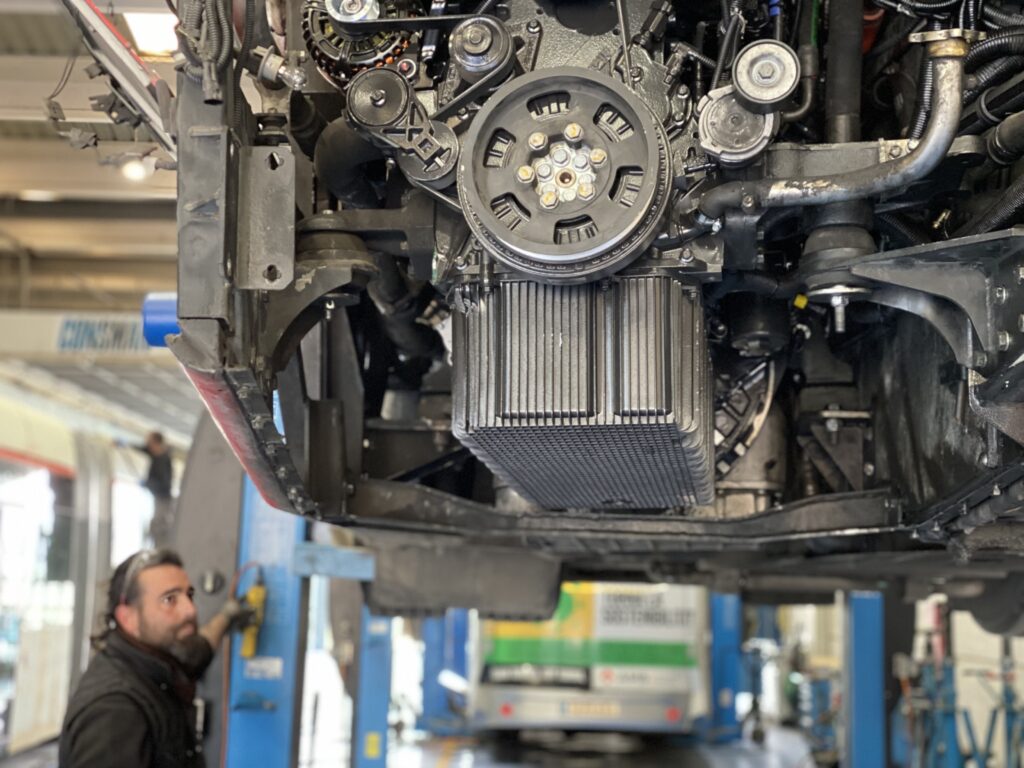
25 Oct The evolution of city bus engines
The evolution of city bus engines
Over the last few decades, the engines of both commercial and industrial vehicles have evolved and new forms of propulsion have emerged in search of less polluting systems. In this article we would like to detail the different types of engine propulsion that can be found in the urban buses that run in our cities.
Types of propulsion systems in urban buses
Diesel engine
Buses with diesel engines have been the most prevalent up to now due to their power, range and durability. This type of engine works through compression-ignition. Compressed air is mixed with diesel and combustion is created by high-temperature compression. Buses benefit from this type of engine because it is more efficient at low speeds than petrol engines. In addition, there is a higher torque available, so that a higher pulling and starting force is achieved, which is ideal for carrying the full weight.
The big problem with diesel engines is their high level of pollution. Also because of their high fuel consumption and noise generation. That is why there are fewer and fewer city buses with these engines. They also require more frequent maintenance.
CNG engine
NGV stands for Natural Gas Vehicles, which means engines that use natural gas as fuel. Its composition is 90% methane and it has two main variants, LNG and CNG. LNG is Liquefied Natural Gas and is a liquid gas stored at very low temperatures that allows a long autonomy of the engine, so it is mainly used in trucks. On the other hand, CNG is Compressed Natural Gas and stores gas at room temperature at high pressures (about 200 bar) with more power but less range and is mainly used in buses.
NGV engines pollute much less than petrol or diesel engines. They emit up to 99% less particulate matter and 20% less CO2. But it has to be taken into account that these engines take up a lot of space and weigh a lot. In addition, their service life is not as long as they are always subjected to high pressures and sudden changes in temperature. The maintenance of an NGV engine is quite complex, especially for vehicles such as buses. At Consman we have specialised personnel who follow the UNE 60637 standard and European Regulation ECE-R 110 and ECE-R 115.
Hybrid system
When we talk about a hybrid system we are actually talking about two engines at the same time, a combustion engine and an electric motor. The two are combined to achieve a more efficient use of fuel and thus consume less fuel.
There are several types of hybrid systems:
- Series hybrid: the combustion engine generates electricity and feeds the internal battery or directly to the electric motor, which is solely responsible for operation.
- Parallel hybrid: In this case, both engines are involved in the operation of the vehicle, with the electric motor supporting the combustion engine.
- Mixed hybrid: This is a combination of the two systems mentioned above. Both engines are connected to the transmission separately and can move the vehicle either separately or together.
Hybrid vehicles are more fuel efficient and environmentally friendly. It is also perfect for city driving. Depending on the configuration of the hybrid system, it is possible to take full advantage of the electric motor by driving at lower speeds and having to start the vehicle continuously due to traffic lights, zebra crossings, etc. For these reasons, a great deal of investment has been made in the creation of urban bus fleets with hybrid engines. The main disadvantages of the hybrid engine are the complexity of maintaining it by combining two technologies and the fact that it is still polluting because it uses combustion.

Electric engine
The electric motor is here to stay and is becoming increasingly important in both commercial and industrial vehicles. Technology has been advancing and the electric motor is becoming a real alternative to the traditional combustion engine. The big new development is the inclusion of a battery that stores the electricity that is then transmitted to the electric motor to run the vehicles. This results in the total elimination of polluting emissions, as well as a very quiet and smooth ride. A great option for urban environments.
In the case of electric city buses, like any electric vehicle, they are first connected to the grid to charge and store electricity in the battery to power the motor. Batteries in buses are usually located on the roof, although models can already be seen on the floor. The range of the vehicle depends on the capacity of the battery and the power of the charger.
The major disadvantage of the electric motor is the replacement of the various components that make it up. In addition, although the vehicle itself does not emit pollution, the manufacture and recycling of the battery is polluting. It should also be borne in mind that you must have a charging station at the base and be aware that the cost of preparing the infrastructure at the depot is very high. Here you have all the details on how to have a good maintenance of electric industrial vehicles.
Hydrogen engine
Finally, we have the latest great revolution in the world of transport, the hydrogen-powered engines. Thanks to a chemical reaction between the hydrogen stored in the fuel cell and the oxygen coming from outside, electricity is generated. Water vapour is also generated and expelled through the exhaust pipe. The electricity is then distributed to the battery which finally reaches the electric motor and drives the vehicle.
It is a totally clean process and generates minimal pollutant emissions. It also has a very similar range to a conventional combustion engine and does not need to be charged at a socket like the electric motor. In this article from a few months ago we talked in detail about hydrogen vehicles.
All these advantages have led to the recent launch of a fleet of hydrogen city buses in Barcelona, which will be expanded over time. It seems to be the definitive solution to achieve excellent urban mobility without harming the environment or the health of citizens.
Although the hydrogen engine is not yet widespread, at Consman we are up to date with the latest developments and we have a maintenance and repair service for this type of vehicle.



No Comments